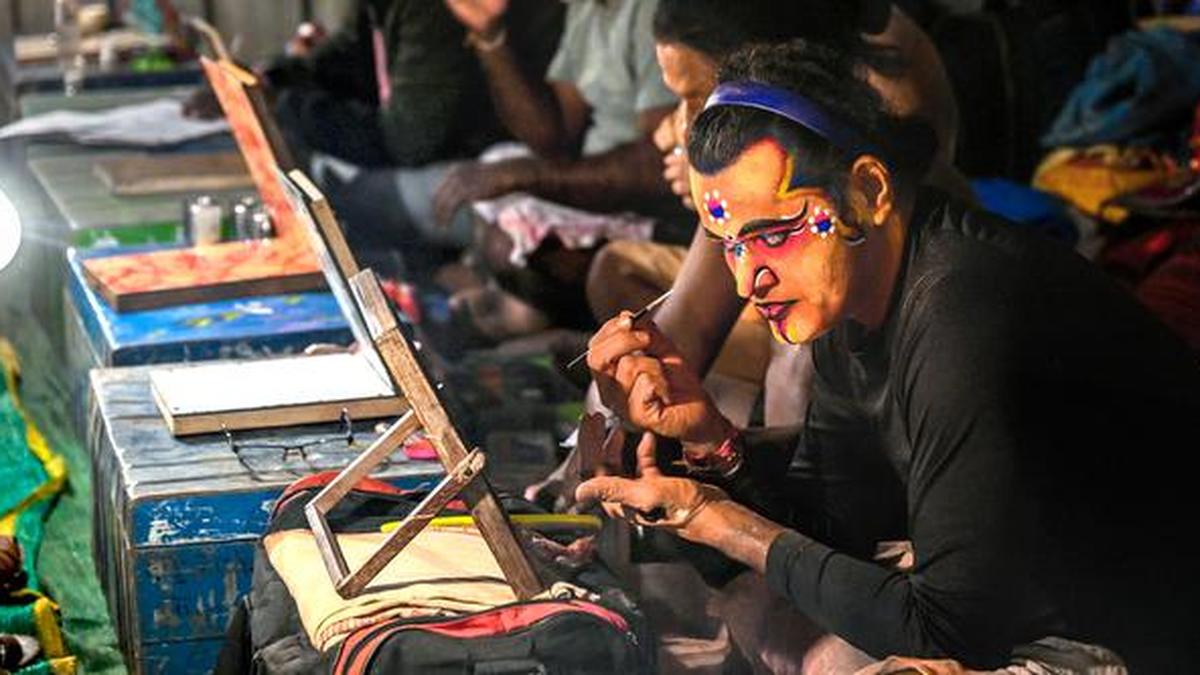
Dashavatar performances in Maharashtra | The men who play women under the stars
The Hindu
Experience the vibrant Dashavatar theatre tradition in Zarap village, Maharashtra, where men transform into women characters for mythological plays.
Zarap village of Kudal taluka in Sindhudurg district, Maharashtra, is bustling. It’s evening and the lanes are alive with Marathi devotional songs and stalls selling toys and vada-pav, shakkarpara, and khaja. The village temple and its surroundings are lit up with twinkling lights. The fragrance of night jasmine and incense is in the air.
At 10.30 p.m., the Dashavatar artistes gather at Samir Tendolkar’s house for dinner. Samir is the owner of the Tendolkar Paramparik Dashavatar Natya Mandal, a theatre company that has been conducting shows around stories from Indian mythology for the past 40 years. After eating chicken, rice, and sliced onion for dinner, the artistes head to the temple, a kilometre or so away. There, in the green room, behind the curtains of the concrete stage, they get ready for the show that will begin at midnight.
The artistes pray to a petara, a box in which the props used in the show, including the Ganesha mask, are stored. Ganesha is the god of auspicious beginnings. Then, they sit in a row next to each other with a mirror placed over iron trunks that contain their costumes, hair, and make-up. Incandescent light bulbs hang over the boxes. A few children from the village squeeze themselves onto a cloth mat and watch two of the men transform into women characters.
Omprakash Chavan, 56, from Amdos village, is essaying the role of Rani Sukhanti, a character in her 20s, in a play from the Shiva Purana, a text considered sacred by Hindus. Ganpat Ankush Manjarekar, 52, from Mochemad village, is playing Ladkaya, the wife of a drunk farmer. She’s a comic who later saves the queen’s life.
Dashavatar is a form of theatre that relies on improvisation around a mythological narrative and its practitioners claim that it has a history of at least 800 years in Sindhudurg district and north Goa. Ever since it began, men have been playing women’s roles. The men are usually farmers, or run small businesses, or employed as daily wage workers for some part of the year.
Every year, the Dashavatar season begins after the paddy harvest, towards the end of the Navratri fast in October, and continues until May the following year.
The plays are based on a clutch of stories of the 10 incarnations of the Hindu god Vishnu: Matsya (the fish), Kurma (the tortoise), Varaha (the boar), Narasimha (the lion-man), Vamana (the dwarf), and Rama from the Ramayana; Parashurama (Rama with an axe), and Krishna (or his brother Balarama) from the Mahabharata; and Buddha and Kalki (an avatar yet to come).













